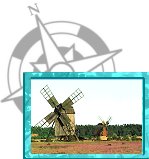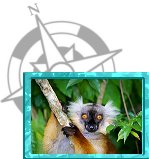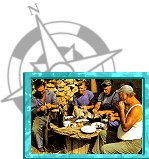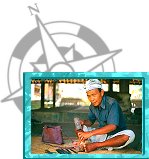With support from

|
|
|
| |
REGIONAL LINKS DIRECTORY
|
|
|
|
| |

Welcome to the GIN regional links directory.
The regional directory is categorised under nine major geographic regions. Each region contains
a list of websites specifically relating to the chosen region.
All websites listed here have been individually chosen based on their quality of content and
appropriateness to the specific region they represent. All links contained within this directory
are regularly checked to ensure they are currently available and do not lead to broken or missing
links. If you do happen to come across a broken link please let us know - email
our webmaster describing the
offending link and we promise to attend to it at our earliest opportunity.
|
|
|
|
ANTARCTIC
The world's coldest and most inaccessible region consists of an ice-covered continent, Antarctica, centred on the South Pole and surrounding this, the vast Southern Ocean, which is largely covered by floating pack ice. The Antarctic is much colder than the Arctic and its only inhabitants are visiting scientists. Various nations claim different parts of the Antarctic mainland. In 1959, twelve nations signed the Antarctic Treaty and agreed that Antarctica should be used for peaceful purposes only.
|
 | |
|
|
|
ARCTIC
The Arctic is an ocean more or less surrounded by land - just the opposite of the Antarctic, which is a huge land mass surrounded by water. The Arctic region generally refers to a rather large land area round the North Pole but the ocean is nearly five times as large as the Mediterranean and is covered with drifting ice which is sometimes 30m thick. Between Greenland and the Canadian mainland is Baffin Island, together with many smaller islands.
|
 | |
|
|
|
BALTIC
An inland sea of northern Europe, the Baltic is nearly 1,600km in length. It lies between Sweden on the west, Finland and the former USSR on the east, and Poland and Germany on the south. It has three main gulfs - the Gulf of Bothnia, the Gulf of Finland and the Gulf of Riga. Navigation in the Baltic has never been easy. The Danish channels and many of the harbours are too shallow for larger ships and wide areas are regularly frozen over for two months of the winter.
|
 | |
|
|
|
CARIBBEAN
The Caribbean Sea is bounded by the West Indies, the east coast of Central America and the north coast of South America. It is nearly 2,400km long and from 650 to 1,100km wide. The many islands surrounding the Caribbean are really the peaks of mountains submerged beneath the sea. After the completion of the Panama Canal in 1914, this sea became one of the busiest waterways in the world, lying on the main route between the Atlantic and Pacific oceans.
|
 | |
|
|
|
INDIAN OCEAN
This is the third largest ocean in the world - after the Pacific and Atlantic oceans - and covers an area of 73,555,715sq km. The Indian Ocean is bordered by Africa on the west, India on the north and Australia on the east, but to the south there is open sea as far as the Antarctic. The southern half of the Indian Ocean has no large islands except Madagascar. Those in the northern half include Sri Lanka and Socotra besides many smaller ones.
|
 | |
|
|
|
MEDITERRANEAN
The Mediterranean Sea is almost landlocked, being joined with the open Atlantic Ocean only by the narrow Strait of Gibraltar. It lies between Europe and Africa and is more than 3,220km long. The north side of the Mediterranean is broken up by the Adriatic and Aegean seas as well as by the peninsulas of Italy and Greece. Most of the islands are in the northern part of the sea. In 1869 the Suez Canal was opened, thus making the Mediterranean the shortest sea route between Europe and the East.
|
 | |
|
|
|
NORTH ATLANTIC
The northern half of the world's second largest ocean is rich in islands, varied coastline and tributary seas. On the west are the Caribbean, the Gulf of Mexico, the Gulf of St. Lawrence, Hudson Bay and Baffin Bay. To the east are the Mediterranean, the Black Sea, the North Sea and the Baltic Sea. As well as purely oceanic islands there are those which rise from the Mid-Atlantic Ridge, including the Azores. Other islands such as The Canaries and Madeira rise from Africa's continental margins.
|
 | |
|
|
|
PACIFIC
The Pacific is the largest and deepest of all the oceans with an area of 165 million square kilometres, an area greater than that of all the world's lands put together. At its greatest width the Pacific measures 17,220km. It extends from the Bering Straits of the Arctic Circle, to Cape Adare, Antarctica, a distance of 15,450km. There are very few islands in the eastern Pacific. Its northern and western borders are fringed with chains of islands including The Aleutians, The Kurils and the Ryukus. The Inner Pacific islands are divided into three main groups - Melanesia, Micronesia and Polynesia.
|
 | |
|
|
|
|
|
SOUTHEAST ASIA
 ANU College of Asia & the Pacific
ANU College of Asia & the Pacific
 ANU Resource Management in Asia-Pacific Program
ANU Resource Management in Asia-Pacific Program
 ASEAN Centre for Biodiversity
ASEAN Centre for Biodiversity
 ASEAN Review of Biodiversity and Environmental Conservation
ASEAN Review of Biodiversity and Environmental Conservation
 ASEAN Tourism
ASEAN Tourism
 Asia Research Centre, Murdoch University
Asia Research Centre, Murdoch University
 Asia-Pacific Adaptation Network
Asia-Pacific Adaptation Network
 Asia-Pacific Center for Security Studies
Asia-Pacific Center for Security Studies
 Asia-Pacific Data Research Centre
Asia-Pacific Data Research Centre
 Asia-Pacific Economic Cooperation [APEC]
Asia-Pacific Economic Cooperation [APEC]
 Asia-Pacific Network
Asia-Pacific Network
 Asia-Pacific Network for Global Change Research
Asia-Pacific Network for Global Change Research
 Asia-Pacific Network on Climate Change
Asia-Pacific Network on Climate Change
 Asian Development Bank
Asian Development Bank
 Asian Studies WWW Virtual Library
Asian Studies WWW Virtual Library
 Asian Technology Information Program
Asian Technology Information Program
 Association of Southeast Asian Nations [ASEAN]
Association of Southeast Asian Nations [ASEAN]
 Centre for Asia Pacific Social Transformation Studies
Centre for Asia Pacific Social Transformation Studies
 Centre for Southeast Asia Studies
Centre for Southeast Asia Studies
 Cultural Heritage Centre for Asia and the Pacific
Cultural Heritage Centre for Asia and the Pacific
 Diversitas in Western Pacific and Asia (DIWPA)
Diversitas in Western Pacific and Asia (DIWPA)
 Economy and Environment Program for Southeast Asia
Economy and Environment Program for Southeast Asia
 HWS Asian Environmental Studies
HWS Asian Environmental Studies
 ICLEI Southeast Asia
ICLEI Southeast Asia
 Indo-Pacific Conservation Alliance
Indo-Pacific Conservation Alliance
 Institute of Southeast Asian Studies
Institute of Southeast Asian Studies
 International Marinelife Alliance
International Marinelife Alliance
 IUCN/SSC Southeast Asia Campaign
IUCN/SSC Southeast Asia Campaign
 Network of Aquaculture Centres in Asia-Pacific
Network of Aquaculture Centres in Asia-Pacific
 Pacific Asia Travel Association
Pacific Asia Travel Association
 Pacific-Asia Biodiversity Transect Network
Pacific-Asia Biodiversity Transect Network
 Pan Asia Networking
Pan Asia Networking
 Partnerships in Environmental Management for the Seas of East Asia
Partnerships in Environmental Management for the Seas of East Asia
 South Asia Cooperative Environment Programme
South Asia Cooperative Environment Programme
 South Asian Network for Development & Environmental Economics
South Asian Network for Development & Environmental Economics
 Southeast Asia Regional Initiatives for Community Empowerment [SEARICE]
Southeast Asia Regional Initiatives for Community Empowerment [SEARICE]
 Southeast Asia START Regional Centre
Southeast Asia START Regional Centre
 Southeast Asian Fisheries Development Center
Southeast Asian Fisheries Development Center
 Southeast Asian Loop of BioNET International
Southeast Asian Loop of BioNET International
 Southeast Asian Press Alliance
Southeast Asian Press Alliance
 The Asia Foundation
The Asia Foundation
 The Foundation for Development Cooperation
The Foundation for Development Cooperation
 UN Economic and Social Commission for Asia and the Pacific
UN Economic and Social Commission for Asia and the Pacific
 UNDP Asia-Pacific Development Information Programme
UNDP Asia-Pacific Development Information Programme
 UNEP Regional Resource Centre for Asia and the Pacific
UNEP Regional Resource Centre for Asia and the Pacific
|
 | |
|
|
|